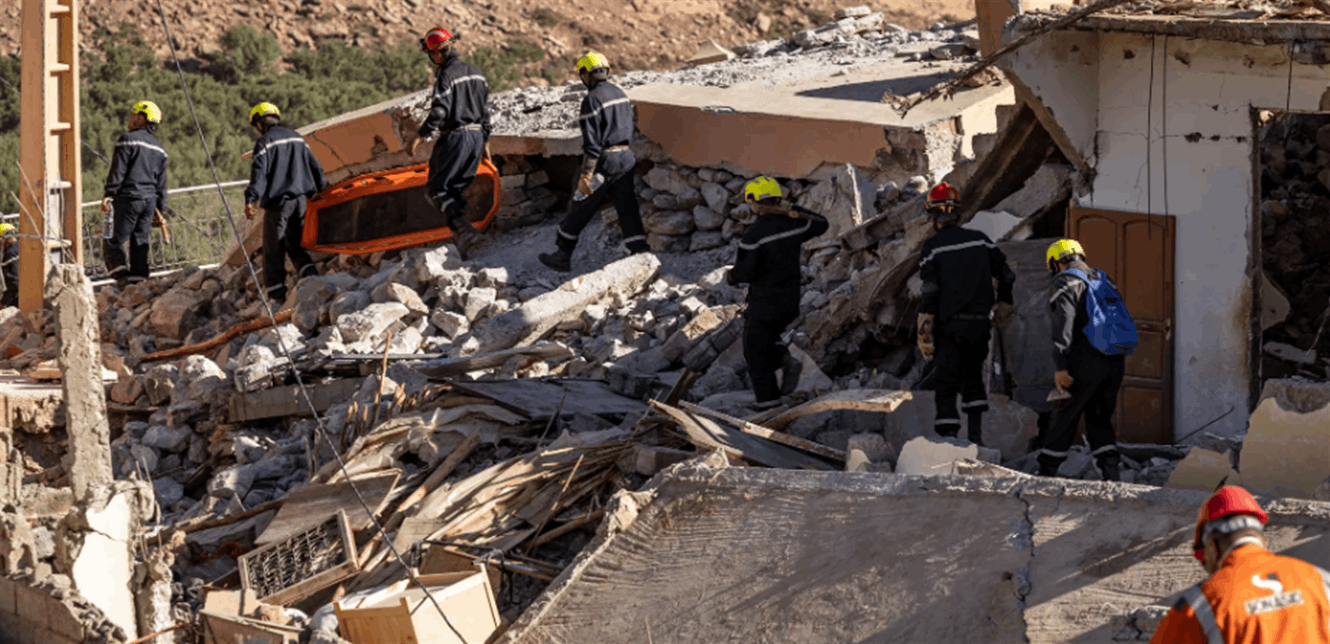We Communicate For Happy Children
 Two Months after the “Earthquake of the Century” in Morocco
Two Months after the “Earthquake of the Century” in Morocco 
Two Months after the “Earthquake of the Century” in Morocco
Mechanisms of Response and Child Protection
It has been over two months since the destructive earthquake hit Morocco on September 8, 2023. The region of Al-Hoceima was particularly affected alongside five other provinces. According to the National Institute of Geophysics in Morocco, it was the most powerful earthquake in a century, claiming 2,946 lives, including hundreds of children, and injuring over 6,000, including thousands of children.
According to local authorities, 2,930 villages were affected, accounting for approximately one-third of the villages in the region, with a population of 2.8 million people. The United Nations estimated that more than 300,000 people were affected in Marrakech and the High Atlas Mountains due to the earthquake, including at least 100,000 children, representing around one-third of Morocco’s population (31.5%), per estimates from 2022. In primary schools, 23 children were killed, five were injured, a teacher was killed, and seven others were seriously injured.
The earthquake also led to the collapse of about 60,000 buildings, including 50,000 homes that were completely or partially destroyed, as well as archaeological and historical buildings. This resulted in the displacement of thousands of families, now homeless. Schools, hospitals, and other health and educational facilities were also damaged or destroyed by the earthquake, causing a significant impact on children in various aspects—health, education, social, economic, and psychological.
First: Responses
The main challenges in response included providing shelter, sufficient food supplies for months, safe drinking water, appropriate sanitation, and emergency search and rescue services. The risks of landslides and the vastness of affected areas posed obstacles to rescue and relief efforts, making it difficult to reach those in need.
The disaster prompted responses at various levels—local, regional, and international—especially those related to children, families, and caregivers. At the local level, the United Nations Office for the Coordination of Humanitarian Affairs stated that Moroccan authorities led national response efforts and activated rescue mechanisms.
The government announced the implementation of an emergency plan to support earthquake victims, including a plan for housing reconstruction, rebuilding destroyed homes, rehabilitating infrastructure, health and education centers. Additionally, tangible items such as tents, blankets, and mattresses were distributed to affected families, along with food and medicine, and psychological support for children who experienced psychological trauma.
1- The government’s program focused on the following steps:
2- Moroccan Red Crescent:
The Moroccan Red Crescent continued on-the-ground response, coordinating with local authorities to assess the situation and provide support to affected individuals. This included first aid, psychological and social support, assistance in transporting the wounded to hospitals, replenishing blood supplies, and providing healthcare for mothers.
3- Royal Armed Forces:
The Royal Armed Forces (the army with its various units) constructed military hospitals in affected cities to receive the injured, such as in the cities of Taroudant (central) and Amzmiz (north).
4- Royal Gendarmerie:
5- Civil Society Actors:
Civil society organizations quickly mobilized to the affected areas, providing assistance to the disaster victims by:
At the regional and international levels, in addition to the emergency humanitarian response in the form of financial aid from several countries, tangible assistance was provided. This included sending search and rescue teams, specialists, emergency response teams, medical teams, military units, and trained dogs. Advanced monitoring devices to detect victims under the rubble and rescue equipment were also dispatched.
Weeks after the earthquake, the Moroccan Ministry of Equipment announced the full reopening of the major damaged roads, with the rate of reopening of secondary roads reaching over 90%. Currently, Morocco is working on restoring heritage buildings severely affected by the earthquake.
Despite the efforts in this context, there remains a need for long-term interventions, as the reconstruction plan, including infrastructure updates, is expected to take five years, according to Moroccan authorities, with an estimated expenditure of $11.7 billion.
These steps come amid significant pressures imposed by the earthquake on the Moroccan economy. The country experienced economic growth during the first quarter of the current year before the earthquake, with a slowdown compared to the 3.5% growth in the first quarter. This slowdown was due to drought affecting the agricultural sector and the repercussions of the war in Ukraine, among other reasons. However, the Moroccan Central Bank, in contrast, anticipated economic improvement by the end of September, expecting continued inflation decline to 2.6% next year. It noted that data related to the earthquake’s impact on public finances and debt levels will only be available in December.
Second: Mechanisms for Child Protection
Wards of the Nation:
In any emergency situation, young children always stand as the most vulnerable. In Morocco, the earthquake sounded the alarm for the need to revisit existing plans for them or construct new, more effective and sustainable ones.
In this context, the Moroccan House of Representatives unanimously approved Bill No. 50.23 concerning granting earthquake-affected children the status of “Wards of the Nation” according to Law No. 33.97. This aims to provide immediate care for orphaned children who lost their families due to the earthquake. According to this law, children under the age of twenty recognized as “Wards of the Nation” have the right to benefit from moral and material care provided by the state taking care of them, within the framework of the directives of His Majesty King Mohammed VI.
Support for Early Childhood in Affected Areas:
The Moroccan Foundation for the Advancement of Early Education, as a non-profit organization caring for children’s interests and serving as a reference for early childhood in Morocco, took the following steps after the destructive earthquake:
Third: Needs and Intervention Areas
The key needs and areas of intervention to assist children, parents, caregivers, and protect them can be summarized in the following points:
